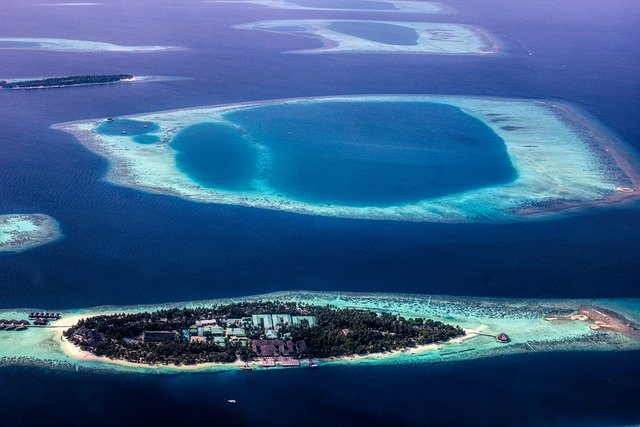 The South Pacific is home to many specks of land that one might easily miss when flying over. In fact, even ships have trouble locating them!
The South Pacific is home to many specks of land that one might easily miss when flying over. In fact, even ships have trouble locating them!
One such group of islands administered by the United States is known as the Pacific Remote Island Areas (or PRIAS). The seven islands and atolls that form this group are home to some of the most diverse species of corals, birds, and aquatic life.
To protect this pristine, untouched habitat, the waters around these islands were declared as a Marine National Monument by U.S President George W. Bush in 2009. Last week, President Obama expanded this protected area to include 200 nautical miles of waters around three of the islands, thereby creating the largest marine preserve in the world. Activities such as commercial fishing and deep-sea mining will be prohibited, to preserve the area's biodiversity.
Not Quite Islands...
While many of these land outcrops are referred to as islands, they are in fact not habitable and are only three square miles or less in area. The correct word to describe them is 'atolls'. Unlike an island which is a land surrounded by water, atolls are "ring-shaped lands" surrounding a lagoon.
Did you know that atolls actually have their beginning in an undersea volcano? The natural geologic processes that lead to the formation of atolls are fascinating, and can take up to 30 million years!
- The undersea volcanic activity gives birth to landmasses that slowly rises above the water level.
- Coral reefs form around the rim of these newly formed islands. New corals grow on top of old or dead ones.
- The island starts sinking back to sea level, while the corals continue to grow upwards.
- By the time the island completely submerges underwater, it leaves a beautiful ring of coral with a lagoon in between.
In some atolls, the central lagoon has completely dried up.
Preserving For The Future
In 1856, the U.S enacted the Guano Islands Act that allowed its citizens to take control of any island in the Pacific which had guano deposits.
Guano, which are droppings of seabirds and bats, are a rich source of fertilizer. Many of these islands and atolls were mined for these deposits. They include Wake, Howland, Baker, and Jarvis Islands, along with Johnston Atoll, Palmyra Atoll, and Kingman Reef. During World War II, the U.S constructed military bases on some of these islands.
Today, the islands are a haven for wildlife and one of the last pristine areas not touched by mankind. The coral forests are teeming with many species of fish, turtles, dolphins, sharks, and other aquatic life. The small dots of land are nesting grounds for millions of seabirds. These islands are also "laboratories" for scientists to examine the impact of climate change in the remotest parts of our world.







